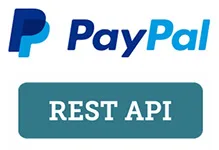I am trying for the first time to implement a PayPal Checkout solution (aka PayPal Commerce Platform for Business) in an ASP.NET Web Application, using Web Forms. I’ve set up a new REST API for the Sandbox and followed PayPal’s Set up server-side SDK guidance to install the SDK in my .NET project. PayPal’s button demo now lets me log into the Sandbox with a newly created Sandbox user name and make a test payment, which is confirmed as being successful. So far, so good.
My next step was to create a PayPalButton.aspx page containing exactly the same code as used on Paypal’s button demo page. All my updated code was then uploaded to my live site. That’s when I hit a problem, as the PayPal buttons don’t work on my live site (the PayPal log in window just briefly flashes and then disappears). Being a total newbie to the Paypal Checkout process, it’s highly likely that I have made some very basic error.
The only thing I can think of is that my problem might have something to do with the section in Set up server-side SDK that refers to modifying HTTP request headers? I didn’t understand what that section was asking me to do.

 Question posted in
Question posted in 

2
Answers
This morning, I managed to resolve the problem with my PayPalButton.aspx page just briefly flashing the PayPal login page. As previously mentioned, it contains a script copied from PayPal's button demo. I then realised that it was different from the sample script provided on the Integrate Checkout page.
I created a new PayPalButton2.aspx page containing this alternative script and, unlike PayPalButton.aspx, it worked fine. In both cases, I had substituted my own Sandbox ClientID.
What routes/paths did you implement the create order and capture order functions at? What data do they return? Update your question with this information. For the create order route, is the data a valid JSON object with a PayPal order ID in the
idkey?Have you set the paths in your "PayPalButton.aspx" HTML/JS code to call the aforementioned routes? Your question does not include any specific information about what is going on, i.e. your button code and the result (Response body) of the
fetchcalls from the browser’s developer tools ‘Network’ tab.